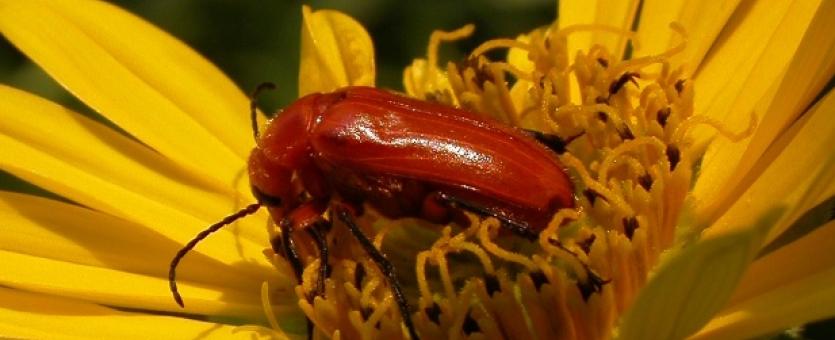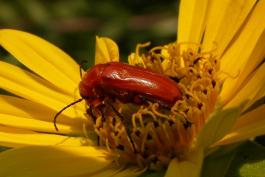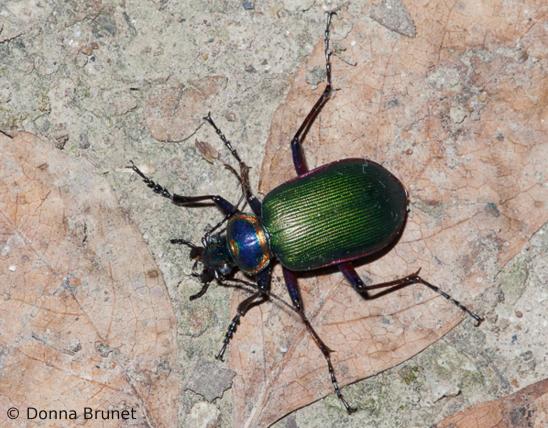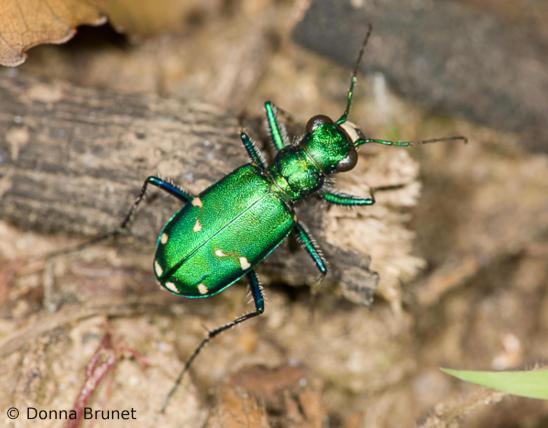
Nemognatha blister beetles are leathery beetles often seen visiting flowers. There are nearly 30 species in North America. Blister beetles in the genus Nemognatha don’t have common names, even though they are commonly seen. They are usually rusty orange, black, or both, and they typically visit sunflowers, thistles, and other members of the aster family. They mate and lay eggs on the flowers. The new-hatched larvae grab on to a visiting solitary bee and ride with it to its nest, where it eats the bee’s honey, eggs, and/or larvae, before pupating itself. Learn more about oil beetles and other blister beetles (family Meloidae) in their family page.
Food
As adults, these beetles have long mouthparts used for sucking nectar and pollen from flowers, much like butterflies do. "Nemognatha" means "thread jaw." These beetles are especially fond of flowers in the sunflower/daisy family (Asteraceae).
As larvae, they eat the honey, eggs, and/or larvae of solitary bees.
Life Cycle
Females deposit eggs on flowerheads. When the larvae, called triungulins, hatch, they attach themselves to the legs of certain types of solitary bees as they visit the flowers. The bees carry them unwittingly to their nests, and the beetle larva is parasitic on the bees.



























